Ruth Elwood Martin: I worked as family physician in Vancouver from 1983 to 2009; I also worked part-time in the medical clinics of bc correctional centres for men and women for seventeen years. I am a Clinical Professor of the School of Population and Public Health, University British Columbia, and an Associate Faculty of the Department of Family Practice. My experiences as a prison physician participatory researcher during the time period of Arresting Hope changed me, such that my goal became to foster the improvement of prison health and to engage patients’ voices in the process. I helped create the Collaborating Centre for Prison Health and Education, which is a group committed to encouraging and facilitating collaborative opportunities for health, education, research, service and advocacy, to enhance the social well-being and (re)integration of individuals in custody, their families and communities. I also lead the Prison Health Special Interest Focused Practice Group, of the College of Family Physicians of Canada.
Mo Korchinski: Since writing Arresting Hope, I have found my three children through Facebook and have a loving relationship with my children today. I am a proud grandmother to a beautiful four-year-old granddaughter, Letisha, who has taught me what unconditional love is. I live independently and am graduated in May 2012 from the Nicola Valley Institute of Technology with my degree in Associate of Arts. I started my Bachelor in Social Work in September 2012. I volunteer as a community-based researcher with Women in2 Healing and work as a research assistant with the Canadian Institute of Health Research funded project “Doing Time Unlocking the Gates” at the University of British Columbia. I am clean and sober and spend most of my spare time helping others in my community. I feel that the key to turning one’s life around and keeping it moving in the right direction is to help others turn their lives around. I co-directed the documentaries Revolving Door and Unlocking the Gates, which are about women’s release from prison, and when the prison gate is unlocked, but the doors to society are kept locked. My passion is to take my experience of addiction and the justice system and show people that changes are needed: to get the voices of women who are still inside of prison heard; and, to get policy-makers to understand that change is needed in the prison system and in the communities.
Lynn Fels: Working on this book project and with those involved in the research project in accw has been an unexpected gift for me. I am humbled and awed by the strength, wisdom, and commitment that the women I have met bring to our conversations and shared experiences. I came to understand that the stories we live, dwell in our bodies. We are marked by our beginnings and by those we meet on our life journey, but we may take action to change our narrative. I am a writer and Associate Professor in Arts Education at Simon Fraser University in British Columbia, and a former editor of the on-line education journal, Educational Insights. I am passionate about the arts as exploratory spaces for learning. I am currently involved in a five-year research project on arts for social change in Canada. My books include, Living Together: Unmarried Couples in Canada, and, co-authored with George Belliveau, Exploring Curriculum: Performative Inquiry, Role Drama and Learning.
Carl Leggo: I am a poet and professor in the Department of Language and Literacy Education at the University of British Columbia. I think we can live more joyful lives if we commit ourselves to writing about our lived experiences and sharing our stories, poetry, and wisdom with others. So, it is a joy to work with others to encourage them to write and to reveal their voices with heart and truthfulness. I have published several books of poetry and scholarship, always with a focus on creativity and the arts, including: Growing Up Perpendicular on the Side of a Hill; View from My Mother’s House; Come-By-Chance; Teaching to Wonder: Responding to Poetry in the Secondary Classroom; Lifewriting as Literary Métissage and an Ethos for Our Times (co-authored with Erika Hasebe-Ludt and Cynthia Chambers); Being with A/r/tography (co-edited with Stephanie Springgay, Rita L. Irwin, and Peter Gouzouasis); Creative Expression, Creative Education (co-edited with Robert Kelly); and Poetic Inquiry: Vibrant Voices in the Social Sciences (co-edited with Monica Prendergast and Pauline Sameshima).
Contributing Author Bios:
Alison Granger-Brown: I was sent quite by accident to the Forensic Psychiatric Hospital for my first practicum in Therapeutic Recreation (tr). Once there I realized that something about the setting was compelling and that I wanted to work in a related field. I completed my preceptorship at Burnaby Correctional Centre for Women and have continued working with incarcerated women ever since. Thirteen years later, I have worked in both provincial and federal custody from segregation to open custody and also with women on parole. The most exciting and fulfilling time of my career was at accw. It was an opportunity to start something new as we set a very clear intention from the beginning working together with the women and staff to create a special environment open to creative programming and most especially supporting hope and possibility for us all. I have used my previous education in nursing along with tr and developed my recent academic studies around the learning needs of women in a prison setting. I recently completed my Ph.D. but nothing will equate to what I have learned from the women I have been privileged to journey alongside for the last dozen or so years.
Amber Christie: I am a Cree First Nations woman. I was first incarcerated in 2000 at the age of twenty, and I returned to prison thirty times over the next five years. In my most recent incarceration in 2005, I spent six months inside Alouette Correctional Centre for Women. Before that, I had spent time in Surrey Pretrial and Burnaby Correctional Centre for women. I suffered from a severe heroin addiction for many years and lived on the streets. Today, I have been free of drugs and prisons for five years. I am a mother and a contributing member of society. I am a Research Assistant for the University of British Columbia, working in community-based participatory research. I am employed by the project called “Doing Time,” and I am part of the “Women in2 Healing“ team. I also work with a community-based participatory research project called “Aboriginal Healing Outside of the Gates.” My goal is to support women in the reintegration process so that they can safely reintegrate into their chosen communities.
Brenda Tole: I retired after a thirty-seven-year career with bc Corrections Branch. I graduated with a Bachelor in Education from the University of British Columbia and started my career as a community Probation Officer/Family Court Counsellor. I worked in various communities in the Lower Mainland over the next fifteen years, followed with a variety of management positions in different correctional centres in the custody division. The last position I held was as the Warden of Alouette Correctional Centre for Women from 2003-2007. I live with my husband Mark and spend time with five grown children and six grandchildren between Cultus Lake and Galiano Island.
Christine Hemingway : While incarcerated at ACCW, I was one of many women to start the participatory research program with Dr Ruth Martin. We discovered and learned many things that were needed for women while incarcerated and help for when women are released. I have remained in touch with Women in2 Healing and have helped by telling my story to give women hope that when they are released they are not alone. Since my release in November 2006, I have been very active in trying to help change health care inside the prisons for women. I was also a member of the University of British Columbia roundtable international conference Bonding Through Bars, with many delegates from around the world, to keep mothers and their babies together while incarcerated. My son, who is now twenty years old and an airline pilot, also helped with the roundtable project, voicing his thoughts on how he was affected at the age of eleven years being separated from me for seventeen months. I now own a store and work very hard at communicating with my son, which we didn’t do until we both got involved with Bonding Through Bars; it really helped us to open up. My son and I will continue to help mothers connect with their children upon release. I am very grateful that I became involved with the research team and Women in2 healing; it has helped me get my life back and become a productive member of society.
Debra Hanson: I was a passionate member of the accw inmate participatory research team. A former restaurant manager, I brought team organizational expertise to the participatory research project. I have two grown daughters who had been in and out of the correctional system and I truly wanted to get involved in helping to build the strengths of the women in the research team. I led the development of an orientation package for all new team members, and the ‘paragraphs of passion’ exercise, which women participated in when they joined the research team. I taught myself PowerPoint and other computer skills, and then coached other team members in these skills. My research passion was housing, because I knew that housing is the first step to improving women’s health when they leave prison. I am currently working as a baker.
Teagen: I have a busy and great life. My son started kindergarten in September 2011 and I’m having a blast helping him with all his school activities. When I’m not with him, I am in class at Douglas College where I am two years into my psychiatric nursing degree. When not at school or with my son, I can be found at the care facility I have been working at since 2008. In our downtime, we love to play outside or visit with our family.
Jen Flavel: Jen was a much loved daughter, mother, and friend to many. She had a passion for photography and took a ton of pictures. Jen’s life ended tragically and too early.
Kelly Murphy: While incarcerated in 2005, I participated in the Women In2 Healing research project, which seeks to collaborate with women as they are being released into the community and to improve their health during that process. I have arisen out of abuse and adversity and I am now passionately involved in helping other women find their voice and rise out of oppressive circumstances. Working with narratives and dialogue, I advocate to tell the stories of the women that I journey with. I live in Vancouver and have been employed with ubc since 2008, working on various community based research projects. I am one of the founding members of Women in2 Healing working in the community to assist women offenders to end the stigmatization of incarcerated women.
Lara-Lisa Condello: I am an Instructor and the Justice Studies Department Head at Nicola Valley Institute of Technology (nvit)—bc’s Aboriginal post-secondary institute. I founded nvit’s prison education program. I participate on prison program advisory committees and am a co-investigator on a participatory action research team at ubc. Advocating prison human rights, I am concerned with issues such as health. A practitioner of Indigenous collaborative learning, I apply artistic media to address the provocative yet often misunderstood concepts of penal abolition and transformative justice. I am passionate about progressive social change and am committed to promoting life-long learning and grassroots community development.
Linnea Groom : As a mother of two adult sons, wife, and sister of two brothers, I felt challenged at the thought of relating exclusively to females, when asked to coordinate the w2 volunteer program in a women’s institution. My two-decade involvement with people in incarceration began on a volunteer basis, along with my husband. My passion for relating to people who are marginalized in this way came from my lived experience of being a visual racial minority in the community where I spent much of my childhood. I find joy in affirming women in their value and abilities.
Lisa Torikka: I have been a resident at the Gateway of Hope as part of the Opportunities Program since my release from accw. Since that time, I have worked hard. I completed (with honours) a twenty-week Cooks Training Program, I have become a first year apprentice with ita as a cook, I work part-time jobs, and have full-time employment starting in September with Kwantlen University, and achieved many smaller goals such as getting id, learning how to budget, obtaining a driver’s license etc. I now know how valuable supported living is. I always thought, in the past, that I could do it on my own, I know differently now. This has been one of the biggest changes I made in my life, to let others help me, to humble myself, and allow people to guide me. I have many more goals to accomplish and believe that one of them is helping women that come out of prison. I don’t really know what that looks like yet, but I do know that by just doing what I am doing, by living my life the way it was meant to be lived is helping to inspire other women to try and do the same, and for now, that is enough.
Marie Fayant (Holy Cow): I am a Cree descendent from Saskatoon Saskatchewan. I have two beautiful sons, six grandchildren, and one great-grandchild born. I have worked with our Métis Society in Surrey, the community with Kla-how-eya with the children and families, I worked for a short time as a Counsellor at Native Education Centre, and I take part in Ceremonies whenever requested at Langara College and Simon Fraser University. I am involved with the First Nations Breast Cancer Society as a Director. I started to work in the women’s correctional centre when two wonderful co-workers, and one woman in prison who had cancer, convinced me that they needed an Elder/Spiritual Advisor. I have worked in provincial and federal centres and volunteered for many years in the male correctional institutions. I invite inmates to come to sweats in the community with their families when they are released from prison.
Marnie Scow: I am twenty-four years old, and I have been out of prison and living clean off drugs and alcohol for almost three years. I attend Douglas College; I am completing my ba in Criminology, with a minor in Psychology, before attending law school at University of British Columbia. I hope to become a criminal defense attorney. I am actively involved in both my community and school as well as with Women in2 Healing. I have shared my story and my experience, strength, and hope with several organizations across the province in hopes of helping others realize that there is another way to live. I am also employed fulltime as an assistant manager in a Greek tavern.
Melissa Glover: Melissa was a strong woman with a beautiful smile who was passionate about life. Melissa loved making everyone laugh with “tearful, non-stop giggles.” Melissa’s poetry reflects much of her journey through life: “the good, bad and the ugly.” Melissa was an enthusiastic member of the participatory research team, and her passion was to become healthy so that she could spend more time with her daughter. Melissa’s life ended tragically and too early. She is missed by many.
Rene Chan: I am a gentle and loving woman and help others whenever I can. I trained as an inmate peer educator and believe that education is a way for incarcerated women to improve their lives and their own health. I have been through hell and back, only making me more compassionate and less judgemental. Although we hear “no you can’t, you’ll never make it…” we have proven that we can! Everybody’s dreams are possible and I am living well into my dreams today.
Annette Dubrule: After I was released from prison, I worked for two years as a research assistant on the Doing Time participatory research project in Prince George, bc, and then I worked as a receptionist for a law firm for eighteen months. I am hoping to take the Medical Laboratory Assistant program online through Thompson Rivers University, and have arranged a practicum for this in Quesnel, bc. I spend as much time as I can with my son, who stays with me every alternate week, and I communicate daily with my daughter who lives in Ontario with her father. I stay in shape, when not working or taking courses, by attending the gym regularly, climbing Cut Banks, and going for long walks and hikes. I have always had an interest for photography and I enjoy taking and then modifying pictures. I still live with my mom out in Blackburn, where we own a log home that requires much maintenance, which I enjoy doing. I recently applied for a pardon.
Terry Howard: I began prison outreach as a volunteer twelve years ago and jumped at the opportunity to coordinate the prison outreach program for the Positive Living Society of bc. I started working with the women at Alouette Correctional Centre for Women in 2005 and was immediately captivated by the organic information dissemination among the women who were part of the community-based research project Women in2 Healing. I was stunned at the new passion to pass on the information from their presentations to the other women incarcerated with them in an informal, yet incredibly effective educational blitz. In my years of prison outreach, I had never seen an uptake of information as effective as what happened among the women with their newfound knowledge of the power of education. They were passionate, informed and intent on letting other women know of the dangers inherent in their own issue. This experience forever transformed my approach to working with people in prison. I am now the Director of Community-Based Research for Positive Living bc (formerly bc Persons With aids Society).
Vivian Ramsden: I am a Registered Nurse and received a Ph.D. in Interdisciplinary Studies from the University of Saskatchewan. I am a Professor and Director of the Research Division, Department of Academic Family Medicine at the University of Saskatchewan. My background spans both critical care in acute care settings and primary health care in urban, rural, First Nations, and international communities. My research interests are: primary health care, participatory processes of research and evaluation; mixed methods; and, prevention of chronic diseases. I spend a portion of each year working at Omayal Achi College of Nursing in Chennai, India.
Tanya Newell: I had been in and out of jail since I was a juvenile in 2005. When I had Mason at the age of thirty, I had already served over ten years in institutions: I was institutionalized and I was completely oblivious to the fact that things needed to change. My plan on my release day was always to get high, to return to place of my offence and arrest (where my “friends” were) and to continue the cycle of addiction and crime that I knew. The chance to bring my baby back to the prison after his birth changed my life for the better. Having Mason with me at accw allowed for bonding that we otherwise wouldn’t have had an opportunity to have. Had I not been allowed to go to the prison with my infant son, the bonding would not have been there: my plans would have completely changed for release and I would probably still be in the (correctional) system today. Having Mason with me in prison, made me be more accountable in my release planning and I had to orchestrate a plan that was suitable for both him and I. It made me really have to look at the options, read the literature and look into what these houses had to offer—I was responsible for another life. From accw, we went to Peardonville Treatment facility, because they accept babies there at three months old. I have been out of jail since then, with the exception of one return for charges that I’d already had prior to Mason’s birth. I am drug and alcohol free. I am happy and healthy. I have my children in my life: Mitch, Mason, and now Tyson. Mason is a wonderful little boy; he is caring and kind, good-natured and well behaved: a happy normal little boy that was not negatively affected by the circumstance.

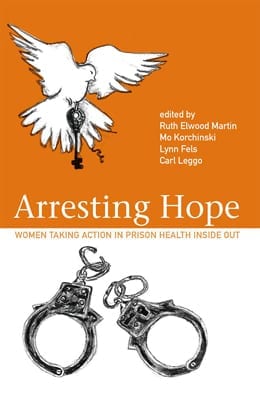
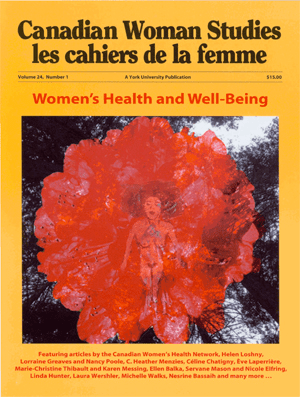
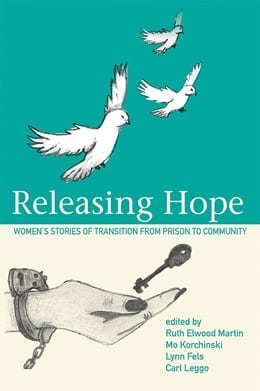
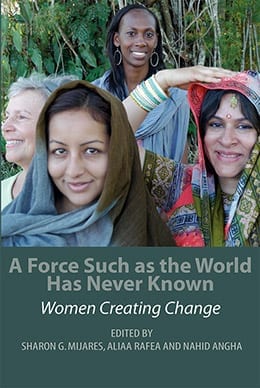
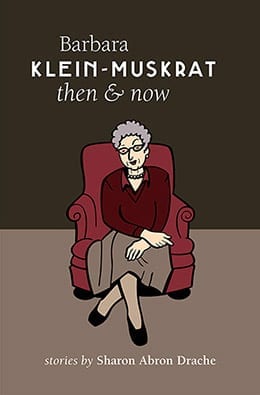

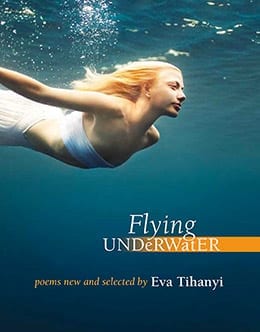
Reviews
There are no reviews yet.